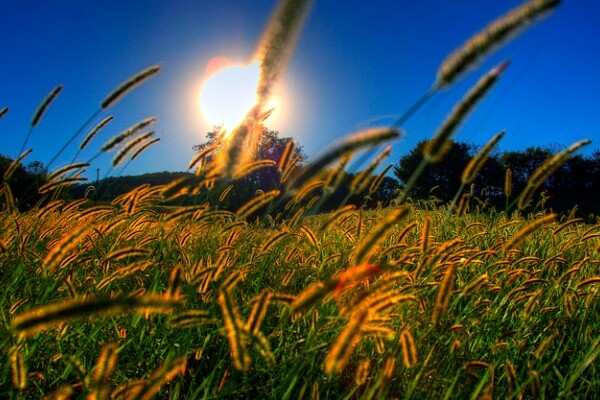Global Warming Is Harming Our Food Supply

When people consider the effects of global warming, the first thing they think about is the weather. The moderate among us complain (rightly or wrongly) about that they'll have to pay higher air conditioning bills in the summer, while the more apocalyptic think up Roland Emmerich-like scenarios where extreme tsunamis wash away New York City. And while worrying about the weather makes sense, seeing as that's a fundamental aspect of global warming and all, the most troubling and serious parts about the whole mess may actually be the implications once-removed from the weather itself.
For instance, how global warming may be destroying our food supply.
Last week, The Guardian released a piece wherein writer John Vidal highlighted the various ways the world's countries are being affected by global warming-based changes to food supply. Among the nightmare-inducing ramifications:
A 15% drop in rainfall in Australia since the 1970s has led to more droughts in the region, Russia is expected to have a 30% to 40% increase in the number of forest fires due to rising temperatures by the year 2050, and the Middle East is expected to have a 20% decline in wheat production, 30% decline in rice production, and 47% decline in maize during the same time period. (Lest we forget that a huge aspect of the Arab Spring riots/revolutions was due to food insecurity in the region.) Also, Brazil's soya crop is expected to decrease by 20%, and the number of malnourished children in Southeast Asia is expected to increase by 9 to 11 million.
But all of that may be nothing compared to what Africa's going to have to deal with: General crop yields are expected to drop by up to 22% and their population is predicted to double in the next 40 years. Combine less food with more mouths to feed and that's a powder keg waiting for a match.
And the U.S. is certainly not immune. While not expected to be affected directly until the calendar turns over to 2050, when it finally does, our state is sure to be one of the hardest hit:
California's central valley will be hard hit with sunflowers, wheat, tomato, rice, cotton and maize expected to lose 10-30% of their yields, especially beyond 2050. Fruit and nut crops which depend on "winter chilling" days may have to relocate. Animals exposed to many hot nights are increasingly stressed. Many vegetable crops will be hit when temperatures rise only a few degrees above normal.
Which isn't to say the ramifications of global warming aren't already being felt in the country. Maine is currently experiencing an early taste, as European green crabs are eating their way "through Maine's clam flats" because of the rising ocean temperatures. In the process of doing that, they're destroying the world's third largest fisheries industry and one of the bigger pieces of the state's tourism industry. The chilling part is just how quickly the change is occurring. Said a local clammer who spent nearly 40 years fishing on the coast:
"We're realizing that in a single lifetime clams and mussels have disappeared from most of our flats."
Things are changing for us all because of global warming, at a rapid pace and in ways we've never considered. Invasive species are moving into new areas and changing the natural order, droughts and political strife are on the rise due to food shortages, forest fires are on their way to becoming a regular occurrence. This is the new normal. So next time you see a report about the rise in record-breaking temperatures, remember that there are far worse ramifications than no longer having any use for your winter jacket.


